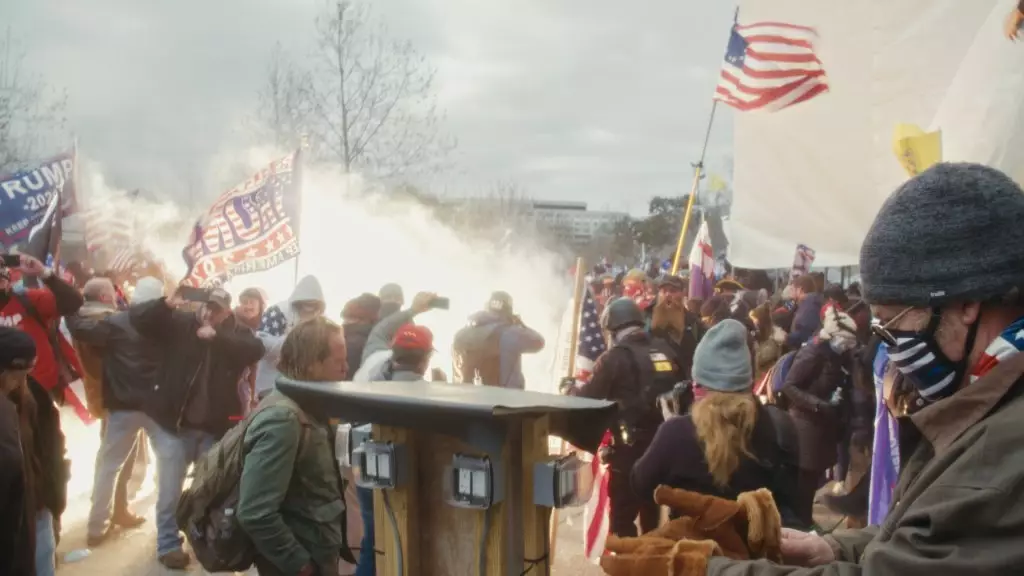In recent years, the events of January 6, 2021, have been etched into the annals of American history as a stark demonstration of political unrest and polarization. The imminent release of the documentary “Fight Like Hell,” directed by Jon Long, aims to delve into the various aspects surrounding this pivotal day. What sets this documentary apart is its commitment to an immersive narrative, utilizing high-quality footage to present a non-partisan portrayal of the circumstances leading to and during the Capitol riot. Through careful examination, this piece aims to uncover the nuances often left out in other discussions surrounding this event.
One of the hallmark features of “Fight Like Hell” is its dedication to a seemingly unfiltered representation of the Stop the Steal movement. Pegged as a crucial precursor to the insurrection, the documentary ambitiously seeks to chronicle the rise of this rallying cry from its inception, coinciding with the tumult of the 2020 election cycle. Long’s choice of documentary filmmaking as a medium invites viewers to interpret events through a lens unmarred by overt partisan commentary. By doing so, “Fight Like Hell” facilitates a potentially richer understanding of the motivations behind the riot, as well as the psychological backdrop that fueled the crowd’s actions that day.
The documentary claims to highlight a variety of key figures embroiled in the events leading up to January 6. Figures such as Roger Stone and Steve Bannon serve not just as characters but as symbols of a larger movement. Their involvement offers viewers insight into the orchestration behind the scenes—how established political strategists influenced grassroots mobilizations. The inclusion of these personalities could lead audiences to reflect on how power dynamics shape political movements and, by extension, the fragility of democracy itself.
While “Fight Like Hell” offers an extensive examination of January 6, it also confronts the broader landscape of a divided America. Long states that even with the extensive media coverage surrounding this event, a significant portion of the population remains entrenched in their respective ideological silos. This division complicates a shared understanding of events that have profound implications for the nation’s democratic framework.
The documentary’s goal to offer a balanced narrative is commendable, yet it raises questions about the effectiveness of offering a perspective devoid of explicit commentary. While neutrality is essential in fostering dialogue, it is equally crucial to ensure that the complexities of the political environment are addressed. Will the filmmakers be able to maintain an unbiased stance, or will the inherent biases of the viewers affect the reception of the film? The challenge lies not only in the portrayal but also in how audiences engage with the material presented.
In reflecting on Long’s assertion regarding the fragility of democracy, “Fight Like Hell” prompts viewers to engage with the material in a way that transcends mere observation. The documentary pushes one to confront uncomfortable truths about the current state of American governance and civil discourse. By presenting this material through an empathetic and open-minded approach, it aims to foster an environment where viewers can grapple with their own complicity in the democratic process.
Furthermore, it compels us to address our responsibilities as citizens in protecting democratic ideals. Just as the film aims to illuminate past mistakes, it serves as a poignant reminder to remain vigilant and engaged in the democratic process. This thematic exploration reinforces the necessity of an informed electorate in safeguarding future democratic integrity.
Ultimately, “Fight Like Hell” endeavors to tell a significant chapter in American history that continues to resonate through current developments in politics. It aspires to break through the noise and confusion surrounding January 6, offering an account that seeks to enrich the understanding of viewers rather than reinforce existing biases. As it approaches its premiere, this documentary stands as a testament to the power of storytelling—an opportunity for reflection, discussion, and, ideally, a pathway toward higher collective accountability in the realm of democracy. The true test will be whether audiences emerge not just informed but also motivated to actively engage in the ongoing dialogue surrounding democracy in peril.


Leave a Reply